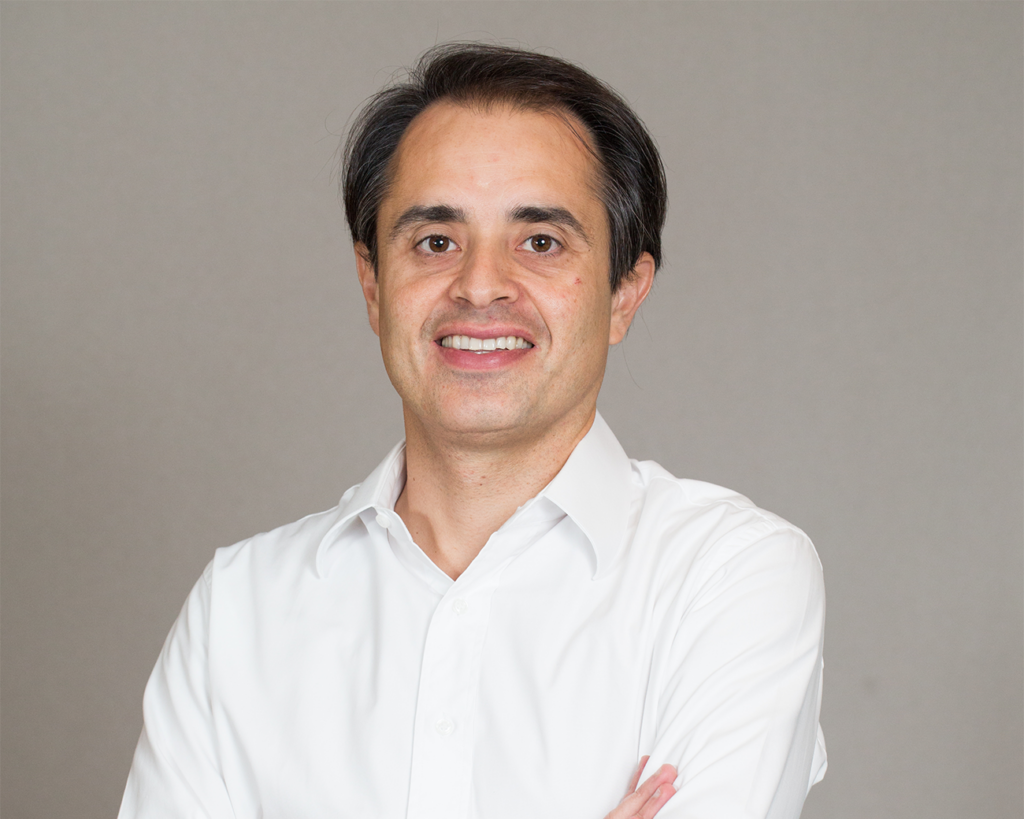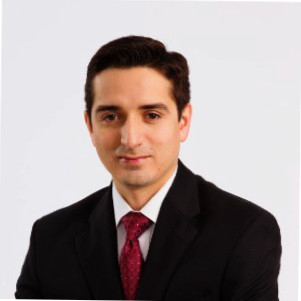LP Profiles, Member Profiles
An Interview with Alejandro Rodriguez, PineBridge Investments
21 March 2013

Alejandro Rodriguez, a Director at Pinebridge, shares his thoughts on Pinebridge’s strategy, the CKD fund structure and the role of the Afores in Mexican private equity.
 LAVCA:
LAVCA:
Rodriguez: PineBridge Investments is a global asset manager with 29 offices around the world, and as of December 31, 2012 has US$71.7 billion in assets under management across three different strategies: Alternative Investments –US$20.8 billion; Equities US$16.9 billion; and Fixed Income US$26.0 billion.
The Private Funds Group is part of Alternative Investments. Our team has operated for over 12 years under Steve Costabile’s leadership. We have dedicated ourselves to one key objective: to assist our clients to capitalize on investment opportunities in the private markets globally through diversified portfolios.
We have committed over $13 billion of capital in the U.S., Europe, Asia, and more recently Latin America, where we currently observe a relevant number of institutional quality managers. This enables the team to construct a portfolio.
LAVCA: What can you tell us about your performance last year?
Rodriguez: In 2012, PFG’s portfolio continued to exhibit strong performance on a global basis. In contrast to prior years immediately following the global financial crisis, successful exits and a surge of liquidity were the hallmarks of 2012. Sources of liquidity were broad based with robust capital markets enabling dividend recapitalizations, an increased risk tolerance leading to IPOs, GPs deploying unfunded commitments to sponsor transactions and strategic acquirers re-emerging as a viable exit route. PFG’s portfolio continued to post improving revenue and EBITDA performance although growth slowed from the years immediately following the global recession.
LAVCA: Roughly what percentage of your portfolio do you generally allocate to emerging markets private equity? To Latin America? Will this change going forward?
Rodriguez: We do not allocate a specific figure to emerging markets nor to Latin America. Our approach is to work with our investors to determine a geographic allocation that makes sense for them based on their current portfolios and their goals. However, I can tell you that the opportunity set in Latin America vis-à-vis the rest of the world looks appealing to us right now based on growth and on market fundamentals.
LAVCA: What is the typical size of a commitment that you make to a fund?
Rodriguez: This is dependent on several criteria, including the fund’s fit with our vehicles, which are typically either co-mingled funds of funds, or separately managed accounts, the size of the fund and the stage of fundraising of the fund. Recently, our bite size has been in the range of US$10 to US$20m. Credit Opps II commitment size has been approximately $10m, and Mexican CKD commitments will be in average $17.5m million per investment.
LAVCA: How does your Latin American private equity strategy fit into your global investment strategy (with regard to geography, sector, number of GPs, type of fund)?
Rodriguez: Latin America is a key geographical component of our global offering. We are focused on growth equity managers investing in the small to mid-markets of Mexico, Brazil, Peru, Colombia and Chile.
LAVCA: PineBridge closed on over $200m in commitments from the Mexican pension funds in 2012 through a local fund of funds structure to invest in the Mexican market. Describe that strategy – how do you expect to deploy that capital in Mexico?
Rodriguez: We are very excited about what is happening in Mexico over the past two to three years. We continue to bear witness to Mexico’s private markets evolution directly with our local investments team. Mexico is the second largest economy in Latin America, and yet one with miniscule penetration (~0.01% of GDP) of Private Equity investments. The opportunities to institutionalize family businesses, consolidate fragmented industries, improve operations from sales management to technology and systems, and enhance capital structures, especially in the small middle market space, are quite significant.
Our Mexican portfolio will focus on Private Equity (growth capital), Private Credit, and Private Infrastructure Funds. We have a strong pipeline for the next three years from which we will select around 12 fund managers. We continue to build on our track record, and have experience investing in private credit around the world. There is significant potential for credit investments in Mexico given the lack of financing from traditional lenders to companies below the top 500 locally. In infrastructure, our focus is on privately-backed projects.
LAVCA: What are your views on Mexico’s publicly traded structure CKD fund structure? Do you see that evolving over time?
Rodriguez: The CKD structure has evolved significantly since it was created. In fact, we were actually amongst the first managers to issue a CKD with a capital call mechanism in 2012.
The CKD structure represents a significant step in the right direction towards the evolution of Private Equity in Mexico. Enabling the pension funds to invest in the asset class will only help the local industry and attract more talent and capital. This will in turn create a virtuous cycle, which we have witnessed in other parts of the world.
That said, there is still room for improvement and I would expect to see this structure evolving over time to look more similar to a traditional limited partnership structure.
LAVCA: Can you speak to the role of the Afores in Mexican private equity? How do you see their appetite for exposure to PE investments and other alternatives both domestically, and eventually internationally? When do you expect to see regulation allowing the Afores to invest outside Mexico?
Rodriguez: The Afores’ participation in local Private Equity has been helpful for the local market. However, only a handful of PE managers have actually been able to tap into the CKD market, and obtain access to the Afores capital. Most of the CKD’s to date have been Real Estate and Infrastructure related. The universe of Private Equity funds outside of the CKD world is actually much larger.
In my opinion, the Afores will only be able to increase their exposure to the asset class significantly if they are allowed to invest internationally. This openness from local investors would also attract international investors into the country, as we have seen in other parts of the world. This would require regulatory change, and I hope that the new government in Mexico will include it in their priorities.
LAVCA: What are the key characteristics of the best emerging markets fund managers?
Rodriguez: PineBridge has over 60 years of experience investing in emerging markets, and what has worked for us is always having local, on-the-ground presence. A manager’s ability to execute investments and exits has proven to be particularly difficult in many emerging markets. In countries where Private Equity is relatively new, business owners may not always appreciate the added value that private equity can bring to their businesses. Deals can take longer to close, and exits could be tricky if you don’t structure the right mechanisms and alignment from day one. Having a local presence can help prevent and solve these issues.
LAVCA: How do you go about finding and selecting the best fund managers?
Rodriguez: We have a very thorough and proactive approach to manager selection. We have sourced most of our pipeline in Latin America directly, and we have longstanding relationships with GPs that begin a long time before we are in the market raising a fund. This ensures that we are more advanced when we start our investment process and due diligence. Manager selection is what we live and breathe every day.
Our investment process has been vetted over the last 12 years, and has delivered solid results. We apply the same standards globally—whether a fund is in the United States, Western Europe, India, Mexico or Colombia. The entire global team is engaged in this process, and incentivized to participate. Having a consistent, proven process with experience, and global perspective applied in the local markets in which we operate is key to delivering results.
LAVCA: Do you ever invest in first-time funds?
Rodriguez: Indeed. Some of the most interesting opportunities in the emerging markets are first time funds. We do not invest in first time managers though.
LAVCA: What data do you use to benchmark returns in Latin America? Would the availability of better data make you more willing to allocate capital to the region?
Rodriguez: Benchmarking and data depth, length and quality remains a challenge in Latin America—as with many other emerging markets—for any investor in the private markets. This adds complexity to our process, but does not preclude us from investing in the region.
LAVCA: Do you invest in any secondary opportunities? Under what circumstances?
Rodriguez: Yes, we have a Global Secondaries team which is actively reviewing a robust pipeline globally. In particular, we target short-duration secondary transactions with projectable mature assets, often in excess of 70% funded. We usually take an opportunistic approach to investing – focusing on less competitive transactions with negotiated outcomes, where we have a distinct competitive advantage via information, sourcing or structuring. Our team has successfully executed this same strategy since 2002, and has acquired over US $2.3 billion in secondary exposure generating attractive risk-adjusted returns for our investors.
LAVCA: How do you see the allocation to private equity in general and to emerging markets private equity in particular changing over the next 5 years?
Rodriguez: As institutional investors around the world look for higher returns to meet their objectives, I believe there will be a shift in allocation towards private markets by investors. Moreover, every investment decision equation has two sides: risk and reward. If emerging markets continue to look less risky relative to some developed markets, whilst offering potentially higher returns, I would think we may observe a trend towards emerging markets private equity in the next 5 years.
You may be interested in...
-

Luciana Antonini Ribeiro, eB Capital
Executive: Luciana Antonini Ribeiro, Co-Founder and CIO Member Name: eB Capital Year...
-

Cristiano Gioia Lauretti, Kinea Private Equity
Member: Kinea Executive: Cristiano Gioia Lauretti, Head of Private Equity HQ: São...
-

Maria Pia Iannariello, MGM Innova Capital
LAVCA recently spoke with Maria Pia Iannariello, Co-Founder & COO of MGM Innova Capital,...
-

Rafael Ramirez, Portfolio Manager, Alaska Permanent Fund Corporation
LAVCA recently spoke with Rafael Ramirez, Portfolio Manager– Private Equity &...